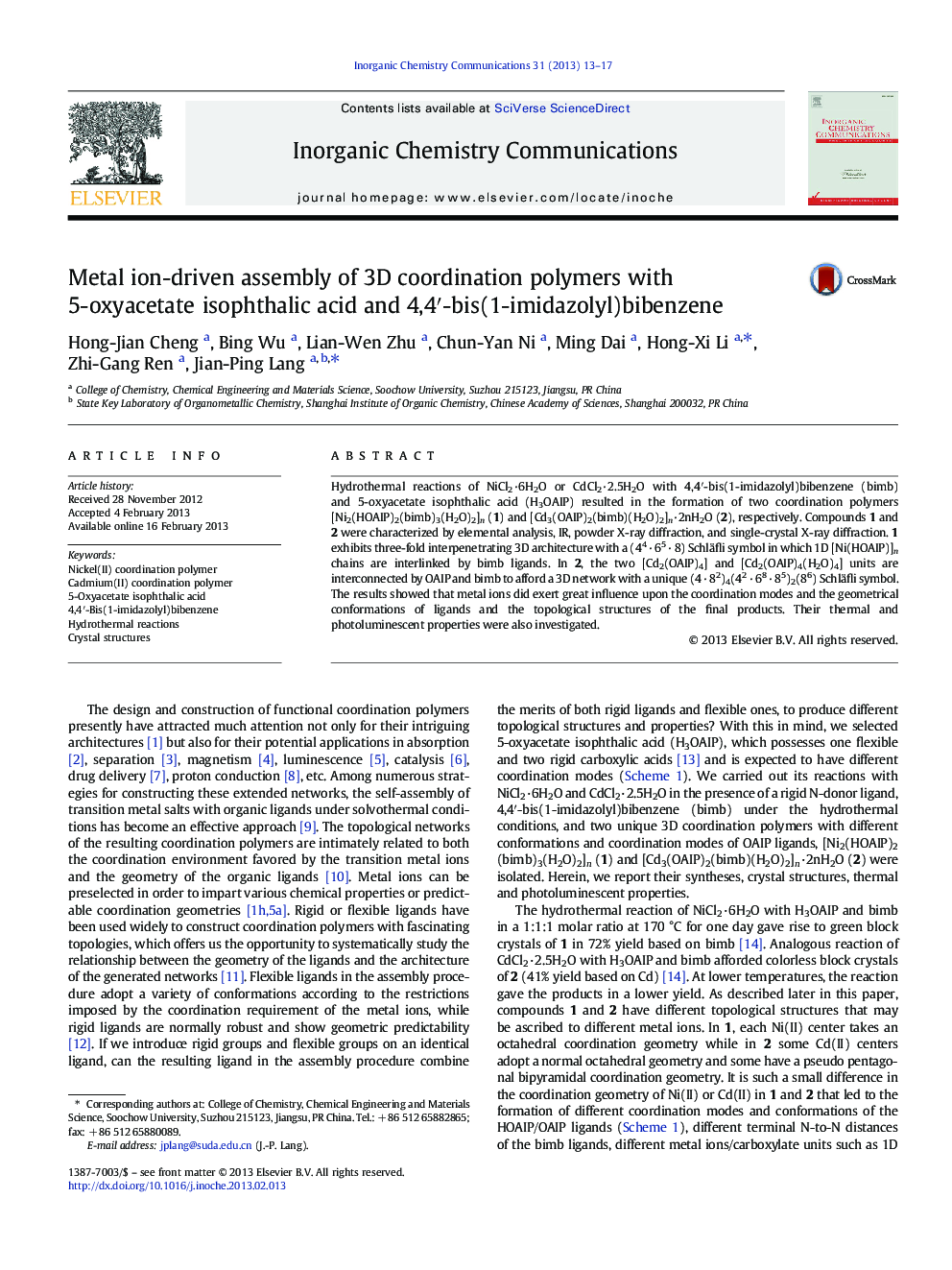| کد مقاله | کد نشریه | سال انتشار | مقاله انگلیسی | نسخه تمام متن |
|---|---|---|---|---|
| 1302126 | 1498959 | 2013 | 5 صفحه PDF | دانلود رایگان |

Hydrothermal reactions of NiCl2·6H2O or CdCl2·2.5H2O with 4,4′-bis(1-imidazolyl)bibenzene (bimb) and 5-oxyacetate isophthalic acid (H3OAIP) resulted in the formation of two coordination polymers [Ni2(HOAIP)2(bimb)3(H2O)2]n (1) and [Cd3(OAIP)2(bimb)(H2O)2]n·2nH2O (2), respectively. Compounds 1 and 2 were characterized by elemental analysis, IR, powder X-ray diffraction, and single-crystal X-ray diffraction. 1 exhibits three-fold interpenetrating 3D architecture with a (44 · 65 · 8) Schläfli symbol in which 1D [Ni(HOAIP)]n chains are interlinked by bimb ligands. In 2, the two [Cd2(OAIP)4] and [Cd2(OAIP)4(H2O)4] units are interconnected by OAIP and bimb to afford a 3D network with a unique (4 · 82)4(42 · 68 · 85)2(86) Schläfli symbol. The results showed that metal ions did exert great influence upon the coordination modes and the geometrical conformations of ligands and the topological structures of the final products. Their thermal and photoluminescent properties were also investigated.
Two 3D coordination polymers [Ni2(HOAIP)2(bimb)3(H2O)2]n and [Cd3(OAIP)2(bimb)(H2O)2]n·2nH2O were generated from solvothermal reactions of NiCl2·6H2O or CdCl2·2.5H2O with 4,4′-bis(1-imidazolyl)bibenzene (bimb) and 5-oxyacetate isophthalic acid (H3OAIP). Both complexes were structurally characterized by elemental analysis, IR, and X-ray crystallography and their thermal and luminescent properties were studied.Figure optionsDownload as PowerPoint slideHighlights
► Solvothermal reactions of NiCl2 or CdCl2 with bimb and H3OAIP gave two complexes.
► Compound 1 holds a unique three-fold interpenetrated 3D architecture.
► Compound 2 has a 3D net containing [Cd2(OAIP)4] and [Cd2(OAIP)4(H2O)4] units.
► It offers insight into how the resulting architecture is affected by metal ions.
Journal: Inorganic Chemistry Communications - Volume 31, May 2013, Pages 13–17